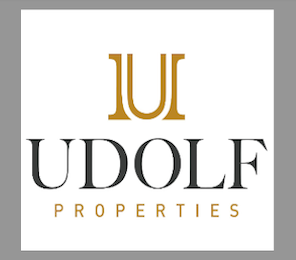NEW HAVEN – From 1933 through 1945, the land between Moscow and Germany became known as “the Bloodlands,” where horrors of the Holocaust took place.
Yale history professor Dr. Timothy Snyder, best-selling author of “Bloodlands: Europe Between Hitler and Stalin” (Basic Books, 2010), will speak about the era and the territory on Tuesday, Oct. 4 at Fairfield University, presented by the university’s Judaic Studies Program and the Carl and Dorothy Bennett Center for Judaic Studies.
In naming “Bloodlands” one of the best books of 2010, The New Republic noted of Snyder’s work: “The cumulative effect makes you reconsider every aspect of modern Europe and World War II.” The New York Times bestseller made many other annual best books lists, including those of The Atlantic, The Economist, The Telegraph and The Forward, and was acclaimed by media around the world. In its review, The Economist called the book “a lifetime’s work by a Yale University historian who deserves to be read and reread.”
Snyder received his doctorate from the University of Oxford in 1997, where he was a British Marshall Scholar. He has held fellowships in Paris and Vienna, and an Academy Scholarship at Harvard. He is the author of numerous books, including “Nationalism, Marxism, and Modern Central Europe: A Biography of Kazimierz Kelles-Krauz” (Harvard University Press, 1998; winner of the Halecki Prize), and “The Red Prince: The Secret Lives of a Habsburg Archduke” (Basic Books, 2008).
Recently, Prof. Snyder spoke with the Ledger about why he turned his scholarly attention to the “Bloodlands.”
How did you develop a scholarly interest in history in general, and in the Holocaust in particular?
A: I always liked to read history, but only understood rather late that I could actually make a career of writing it. I started out majoring in political science, economics, and philosophy, and then switched to history at the very end of my undergraduate years. I was lucky enough to win a fellowship to the University of Oxford, where I wanted to do a doctorate in history to learn languages and prepare myself for a career as a diplomat. One of my advisors, Timothy Garton Ash, told me gently at one point that I would probably be a better historian than diplomat. By that point I had come to love the archival work, the travel, and the sense of discovery.
To become a historian of Eastern Europe is to become aware of the Holocaust, and of other German crimes, in a different way. The Holocaust happened entirely behind the line that became the Iron Curtain. And the opening of the Iron Curtain, the possibility of living and researching in Eastern Europe, was a special opportunity for my generation. As I worked on other East European subjects, I came to feel that East Europeanists had a responsibility to write about the Holocaust. I also came to see that the Holocaust, like other German crimes, and indeed like Soviet crimes, could be presented and analyzed in a new way if seen from the perspective of the region. Other studies have examined individual crimes, or individual groups, or Nazi Germany, or the Soviet Union. I discuss and interpret all of the crimes on the lands where the Holocaust took place, between 1933 and 1945. This helps us to understand the Holocaust, and to anchor it in history, in new ways.
How did you learn the many languages necessary – including Belorussian, and Yiddish, for your research on “Bloodlands?”
A: It helped that I did my doctoral work in England. That meant that I was free to travel in Europe. It also meant that I was in contact with East Europeans who were at Oxford. I owe a lot to patient friends, who endured my policy of never speaking English to anyone who wasn’t a native speaker of English. I also just spent a great deal of time teaching myself, attending courses in the relevant countries, and reading with dictionaries. The crucial combination is being abroad and being willing to put in the time. Beyond that, I always loved to read, and simply made it a policy to only read in whichever language was most important at a given moment. Aside from that, it probably helped that the Internet, which forces us all back into English, wasn’t so ubiquitous in the 1990s.
Is it challenging to maintain emotional and intellectual distance while researching a topic as horrific as the Holocaust? Does the emotional aspect of the topic ever overwhelm the educational aspect when you discuss the book with audiences?
A: Precisely because the issues are so important and so sensitive we have to work as hard as we can to describe and explain them in a defensible, scholarly way. But for me the ultimate reason to write such a book is that individual human life is not only the subject of history, but the basis of ethics. In that sense you never can take a distance from a subject that is the loss of life. This book absorbed me completely for a very long time, but more than anything else I’ve done it gave the sense, each day, that my work was worthwhile. Audiences thus far, around the world, have impressed me with both their dignity and their generosity. In writing and speaking about the book I’ve made a number of new friends who have found their own experiences in the chapters of my book, which has been for me an invaluable gift.
Give us a preview of your Oct. 4 presentation.
A: I’ll be presenting the major argument and topics of my book “Bloodlands: Europe Between Hitler and Stalin.” I’ll try to explain why no such book has been written before, what we know now about the history of German and Soviet crimes, where German and Soviet power interacted and where they didn’t, and how a history of the Holocaust can be seen as an integral part of European as well as Jewish history. I will be discussing all of the major German and Soviet policies as they affected the Bloodlands, where both regimes were at their most murderous. The subject of the lecture will be the greatest catastrophe in the history of the modern West – the murder of 14 million civilians that culminated in the Holocaust.
Dr. Timothy Snyder presents “Bloodlands: Europe Between Hitler and Stalin,” Tuesday, Oct. 4, 7:30 p.m., at Fairfield University Charles F. Dolan School of Business Dining Room,1073 North Benson Road, Fairfield. For reservations or more information call (203) 254-4000, ext. 2066.








 Southern New England Jewish Ledger
Southern New England Jewish Ledger









